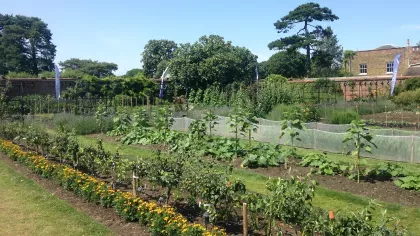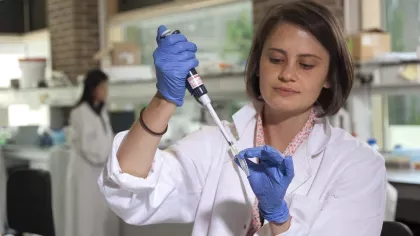Understanding plant chromosome evolution
Michael Chester, Research Fellow in Plant Resources at Kew, reports on his research on plant chromosomes and the potential of technological advances in DNA sequencing.

Plant chromosomes have been observed with microscopes for over 100 years, yet relatively simple questions still remain unanswered. In this blog post I will outline the work I am doing at Kew and explain why I think that research on plant chromosomes is a worthwhile endeavour.
I am studying beet (Beta vulgaris) with the aim of improving our understanding of how plant chromosomes evolve. Beta vulgaris occurs naturally, and is also cultivated in several different forms, including sugar beet, Swiss chard, beetroot and fodder beet. Wild Beta vulgaris is commonly referred to as sea beet and is recognised as a distinct subspecies; maritima. Sea beet is genetically diverse, and this diversity is invaluable to plant breeders.
Characteristics present in some sea beet individuals, such as disease resistance, have been successfully transferred into commercial sugar beet varieties. Breeding to improve the productivity of sugar beet is ongoing – it currently provides about 20% of the world’s sugar.
A great advantage of working on an economically important species is the availability of resources, such as seed collections; allowing experimental research to proceed much faster.
Why carry out research on plant chromosomes?
Over time the order of genes along a chromosome can change. Alterations in chromosome structure can affect how sets of genes are inherited, and in some cases affect how species adapt and evolve.
Plant breeders have long recognised the importance of chromosome structure in inheritance, particularly when hybrids are made between species. Differences in chromosome structure between species can create unexpected patterns of inheritance, or reduce the fertility of hybrid plants. Understanding the chromosomal basis for such quirks may ultimately help breeders produce crops that are more productive, but we are a way off achieving this, in part due to the nature of flowering plant genomes.
Plant genomes
Plant genomes are partitioned into chromosomes that are made up of millions of DNA bases. The chromosomes of flowering plants are large enough to be viewed with a microscope, but they have few distinguishing features, making it difficult to spot changes in their structure.
Obtaining a fine-scale view of changes in chromosome structure has become much easier in the past two decades due to massive increases in the efficiency of DNA sequencing. However, the large and repetitive nature of plant genomes has made genome sequencing an expensive and challenging task.
Current DNA sequencing technologies still produce relatively short DNA sequences which then need to be assembled into longer ones. Even the best plant genome assemblies that are available today still have gaps containing unknown sequences. The end result is that we are still unable to directly compare entire chromosome sequences of different plants. Comparisons are restricted to smaller fragments, preventing biologists from obtaining an accurate picture of how chromosomes vary within a plant species, or how they differ between closely related species.
Looking to the future
The situation is set to change in the next few years; technological improvements in DNA sequencing will mean that chromosomes can be assembled in their entirety. At Kew, some of my colleagues have been trying one of these new sequencers that produce long DNA reads. The MinION sequencer has generated a lot of interest, as it is also very compact, allowing sequencing in the field – something that previously was not feasible.
My research on Beta vulgaris will involve using a combination of methods including making hybrids (to observe patterns of inheritance in their offspring), DNA sequencing and microscopy. Although microscopy has been in somewhat of a decline as a method, it still has an important role to play because it provides a direct view of chromosome behaviour. Microscopy may even prove invaluable in interpreting quirks in inheritance as we gain a much more accurate view of how plant chromosomes evolve.



